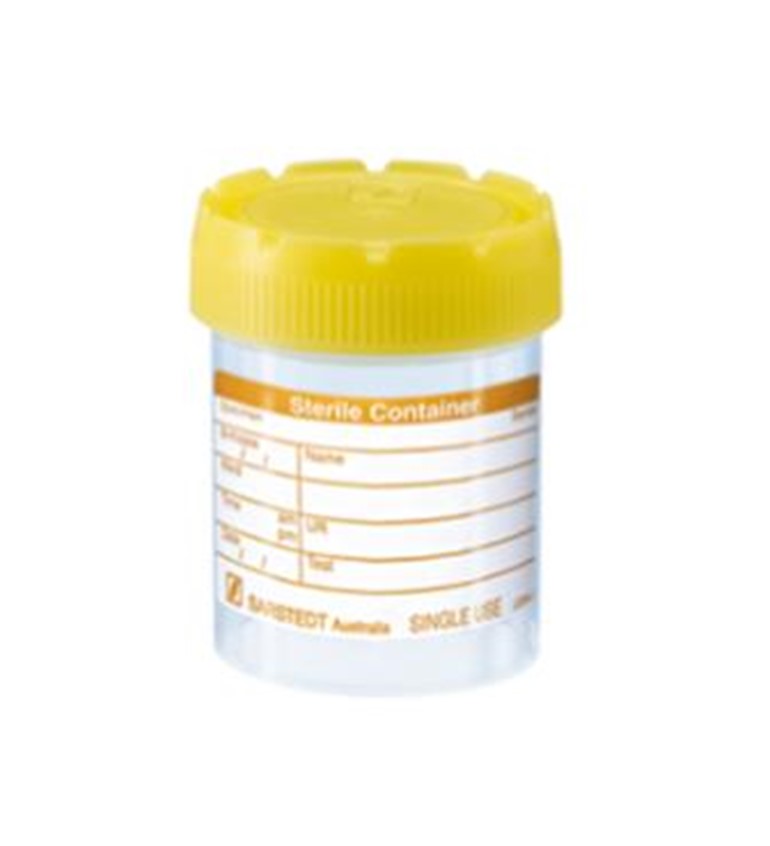Microbiology
Infectious Diseases
Reporting
Registered medical practitioners in England and Wales have a statutory duty to notify their local authority or local Health Protection Team of suspected cases of certain infectious diseases.
The written notification should be preceded by a telephone call to the Consultant in Health Protection based at the above address in cases of Infectious Disease where urgent action to protect public health is needed
See the following link for current practice: https://www.gov.uk/guidance/notifiable-diseases-and-causative-organisms-how-to-report
In case of difficulties see the following link for contact details of UKHSA South West:
UKHSA South West: advice, support and services – GOV.UK (www.gov.uk)
List of Notifiable Diseases under Health Protection Legislation (England) Guidance 2010 with additional update April 2025
-
Acute encephalitis
-
Acute flaccid paralysis or acute flaccid myelitits (AFP or AFM)
-
Acute infectious hepatitis
-
Acute meningitis
-
Acute poliomyelitis
-
Anthrax
-
Botulism
-
Brucellosis
-
Cholera
-
Congenital syphilis
-
COVID-19
-
Creutzfelt-Jakob disease (CJD)
-
Diphtheria
-
Disseminated gonococcal infection (DGI)
-
Enteric fever (typhoid or paratyphoid fever)
-
Food poisoning
-
Haemolytic uraemic syndrome (HUS)
-
Infectious bloody diarrhoea
-
Influenza of zoonotic origin
-
Invasive group A streptococcal disease
-
Legionnaires’ disease
-
Leprosy
-
Malaria
-
Measles
-
Meningococcal septicaemia
-
Middle East respiratory syndrome (MERS)
-
Monkeypox
-
Mumps
-
Neonatal herpes
-
Plague
-
Rabies
-
Rubella
-
Severe Acute Respiratory Syndrome (SARS)
-
Scarlet fever
-
Smallpox
-
Tetanus
-
Tuberculosis
-
Typhus
-
Viral haemorrhagic fever (VHF)
-
Whooping cough
-
Yellow fever
Microbiology
Rejection criteria
Incorrectly/Unlabelled specimens
Labelling Criteria
Ideally the following SHOULD be included on the sample and form:
First name
Surname
Date of birth
Hospital number/NHS number
However, GP/OPD samples can be accepted with 3 points of identification completed.
Specimens that are received and not labelled with the correct details will be rejected unless these are unrepeatable specimens
If an unrepeatable specimen (see below) is received inadequately labelled, it will be processed and a comment made on the report
Unrepeatable specimens include:
-
Biopsies
-
Tissues
-
Joint aspirates
-
Pleural fluids
-
Ascitic fluids
Incorrect specimen type
Where inappropriate specimens are submitted for tests requested, a report will be issued requesting submission of the correct specimen.
Incorrect specimen container type
Where specimens are received in inappropriate containers requested, a report will be issued requesting submission in the correct container.
Expired specimen container
Samples received in expired containers will be rejected and a report will be issued.
Old specimens
All non-boric acid urine specimens over 2 days old and not stored in the refrigerator are rejected.
Boric acid preserved urine samples over 96 hours will be rejected.
All sputum specimens for culture over 2 days old and not stored in the refrigerator are rejected.
All faeces specimens greater than 3 days old are rejected.
All clotted blood samples >5 days old will be rejected.
Insufficient Clinical details
Urine specimens received without sufficient/appropriate clinical information may be rejected after review by Consultant Medical Microbiologist.
Ante-natal serology samples will be rejected after discussion with the relevant ante-natal clinic.
All rejected samples will have a report issued stating the reason for rejection.
Microbiology
Test Repertoire
Please note that the below tests that Microbiology provide are not within the accredited scope of practice. If there are any concerns please contact the laboratory manager:
-
Helicobacter Antigen testing
Advice for Patients/ FAQ
How to collect and store a urine specimen?
Further reading
How to collect and store a stool (faeces) specimen?
Further reading
How to collect and store a sputum specimen
Microbiology
Specimens
Please see below for the specimen types needed for each investigation. Please note that Blood should be collected aseptically by venipuncture, carefully following the tube manufacturers’ instructions and according to good phlebotomy practices.
|
Urine culture |
Urine (Monovette preferred) |
|
Sterile Fluid culture |
CSF / Aspirate / Collections into sterile container |
|
Genital swab culture |
HVS / LVS / Cervical / Penile swab |
|
Soft tissue / superficial wound swabs |
Swab |
|
Deep tissue / abscess |
Swab / Pus / tissue in sterile container |
|
Respiratory culture |
Sputum / BAL |
|
Mycobacterial culture |
As required |
|
Enteric culture / Parasitology |
Faeces |
|
C.difficile toxin detection |
Faeces Bristol Stool types 5, 6 and 7 routinely for C.difficile toxin test. |
|
Antenatal Serology |
Serum (red top vacutainer) |
|
Routine Serology (e.g. HIV, Hepatitis B) |
Serum (red top vacutainer) |
|
Specialist Serology tests (e.g. Mycoplasma, Parvovirus) |
Serum (red top vacutainer) |
|
Mycology microscopy and culture |
Skin / Nail scrapings as required |
Fresh specimens must be delivered to the Pathology as soon as possible after collection to avoid overgrowth or loss of micro-organisms.
Specimens must be obtained prior to antibiotic therapy or chemotherapy whenever possible.
Urines
Green topped urine containers for microbiological analysis
The Microbiology Department uses ‘green’ boric acid containers for all routine urines for microscopy and bacteriological culture.
Please note:
-
that these are NOT suitable for Chemistry investigations.
-
It is common and good practice for plain universal containers to be used for dip-stick testing (leucocytes, protein etc.). Please check whether the dip-stick product you use is compatible with urine containing boric acid. The vast majority of dip-stick products are fully compatible.

The tubes contain boric acid powder as a preservative. The presence of boric acid helps to maintain the microbiological quality of the specimen, it prevents cell degradation and overgrowth of organisms that can occur if the sample is not analysed within 4 hours of collection. Boric acid preservative holds the bacterial population steady for 48–96 hours, and other cellular components remain intact.
Please note:- do not use boric acid specimen containers for purposes other than the microbiological analysis of urine. They are not suitable for:
-
Dipstick tests on urine
-
Urine investigations for TB
-
Urine for pregnancy tests
If only a small sample (<half a container full) is available use a yellow topped container, this should be sent to the laboratory within 4 hours. If this is not possible put the container of urine specimen in a sealed plastic bag and keep refrigerated at 4ºC.

Limitations of examination procedure
Boric acid preservative at a concentration of 1-2% holds the bacterial population steady for 48-96 hours, and other cellular components remain intact. However, if boric acid containing specimen containers are not used, rapid transport and culture will aid reliable laboratory results. Specimens can be refrigerated for a maximum of 48 hours prior to processing.
The incorrect volume of urine added to the boric acid specimen container may adversely impact the effectiveness of the preservative properties of boric acid.
Relevant clinical information, including recent/current antimicrobial therapy will aid the correct diagnosis of urinary tract infection.
Pyuria without apparent bacteriuria (i.e. no growth on routine culture media) may be the result of many factors; as a result of prior treatment with antimicrobial agents; catheterisation; calculi (stones); bladder neoplasms; genital tract infection; sexually transmitted diseases (e.g. trachomatis), or an infection with a fastidious organism.
Bacteriuria without apparent pyuria may be due to the lysis of the While Blood Cells in alkaline urine, which occurs in infection with Proteus sp.
Renal tuberculosis may also be implicated in sterile pyuria but is uncommon, although should be considered if clinically indicated (e.g. in high risk populations)
Urine (MSU) for microscopy, culture and sensitivity
MSU is the recommended collection method – see Guide to taking Urine Specimens
Catheter urine
See Nursing times instructions for collection of catheter specimen urine
Collect the MSU/CSU – do not discard the white powder and fill the boric acid container to the line marked and mix well. This will ensure the correct concentration of preservative.
Specimens should be transported to the laboratory as soon as possible.
Boric acid preserved urine specimens may be stored at room temperature prior to processing.
Sputum/Pregnancy Tests/Pus/Drain Fluids/Nail samples
Appropriate sterile specimen containers are available from the Department on request. See Guide to taking Sputum specimens for patient information for collection instructions for sputum samples.
The volume of specimen influences the transport time that is acceptable. Large volumes of purulent material maintain the viability of bacteria for longer.
Fluids should be sent in sterile specimen pots which are obtainable from the Department and if processing is delayed refrigeration is preferable to storage at ambient temperature.
Faeces
Faeces samples should be submitted in brown topped faeces pot, yellow topped sterile universals are acceptable. See Guide to taking Faeces specimens for patient information for collection instructions.
Specimens should be transported and processed as soon as possible. Important pathogens may not survive the pH changes that occur in faeces specimens which are not promptly delivered to the laboratory, even if refrigerated. If processing is delayed, refrigeration is preferable to storage at ambient temperature.
For information regarding the submission of samples for Norovirus see Norovirus/Outbreak page
Routine Culture Swabs

Swabs must be sent in transport medium obtainable from the Department and if processing is delayed refrigeration is preferable to storage at ambient temperature.
Specimen collection
Detailed instructions relating to specific types of specimens are available from the Department or from the patient leaflets.
Where further/additional analysis of specimens is subsequently required please contact the Department/Consultant Microbiologist as soon as possible
Additional testing may only be available where there is adequate specimen of suitable quality.
Requesting of additional examinations
Where further/additional analysis of specimens is subsequently required please contact the Department/Consultant Microbiologist as soon as possible
Additional testing may only be available where there is adequate specimen of suitable quality
Factors affecting suitability:
-
Specimen type
-
Age of specimen
-
Volume of sample remaining post initial investigation
-
Type of initial analysis performed
-
Subsequent analysis requested
-
Sample storage conditions
Specimens are routinely discarded in line with the time- frames indicated below:
|
Clinical Material |
Retention |
|---|---|
|
Culture plates |
Maximum 7 days |
|
Culture swabs |
7 days |
|
Diagnostic post mortem samples |
2-4 months |
|
MRSA screening swabs |
7 days |
|
Urine specimens |
3-7 days |
|
Pregnancy urines |
3-7 days |
|
Faeces specimens |
7-14 days |
|
Sputum |
7-14 days |
Serology samples |
3 months |
Ante-natal serology samples |
Up to 2 years |
Microbiology
Specimen Required
Specimen Required
A fully labelled, fresh urine specimen, preferably early morning, is required and should be delivered direct to the laboratory as early as possible
Test Sensitivity
Pregnancy test – sensitivity of 25 IU HCG/L
Tests are carried out daily and the results are usually reported and despatched the same day
All results are available within 48 hours









